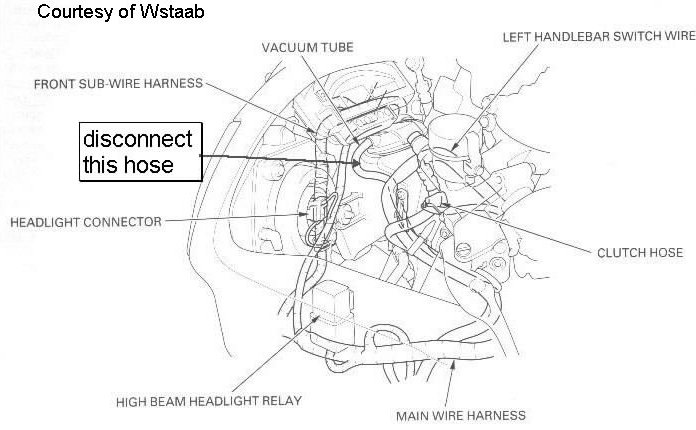bob the builder wrote:Flapper mod....eh?
Custom map.........eh?
I thought you just bought the darn thing and then popped it on and away we go...............obviously I have a lot to learn.


Flapper mod: (
click for link)
On top of the air intake snorkel, there is a rubber hose (about 5mm in diameter)- just behind the headlights. Disconnect this hose, bend it over and tie it with a cable tie. make sure it cant leak air in. In the air intake there is a flap that closes at 5000RPM, to cut down on the intake noise (for noise tests). Obviously any restriction to air, just as the engine is getting into it's stride, is a bad thing. Disconnecting the small rubber hose stops this flap from closing and restricting the air intake.

Custom Map:
All a Power Commander does is either add or subtract fuel from the injectors at different points in the rev range. Modern bikes are setup quite conservatively (with more recent bikes running quite lean for emission purposes). It does this by being plugged in between the bike's ECU and the injectors. When the ECU tells the injector to fire fuel into the engine the Power Commander either adds or subtracts fuel, based on a fuelling map stored in it's memory.
The SP1/2s run very rich as standard. Honda got the willys when some bikes ran very hot in hot climates. The side mounted rads are not the best way to cool a bike after all! (that's why tuned or race VTRs have front mounted rads). By running the engine rich, this lowers the engine temperature.
Take the bike (with the Power Commander fitted) to a dyno centre. The operator will tune the Power Commander to add or subtract extra fuel to the engine at certain RPMs and throttle opening. This will optimise the fuelling for your particular bike. This is called a custom map.
I had a map on my Power Commander that was downloaded from Dynojet's website (the maker of the PC...the UK office is based in Preston, Lancashire). You can see the difference that the custom map made from the power curves on my earlier post....an extra 8bhp at the top of the rev range and an extra 5ft/lb of torque. What you can't see is how much more responsive the bike was, and how cleanly it pulled. The hole in the power curve at 5000RPM was completley removed.
Money well spent!

